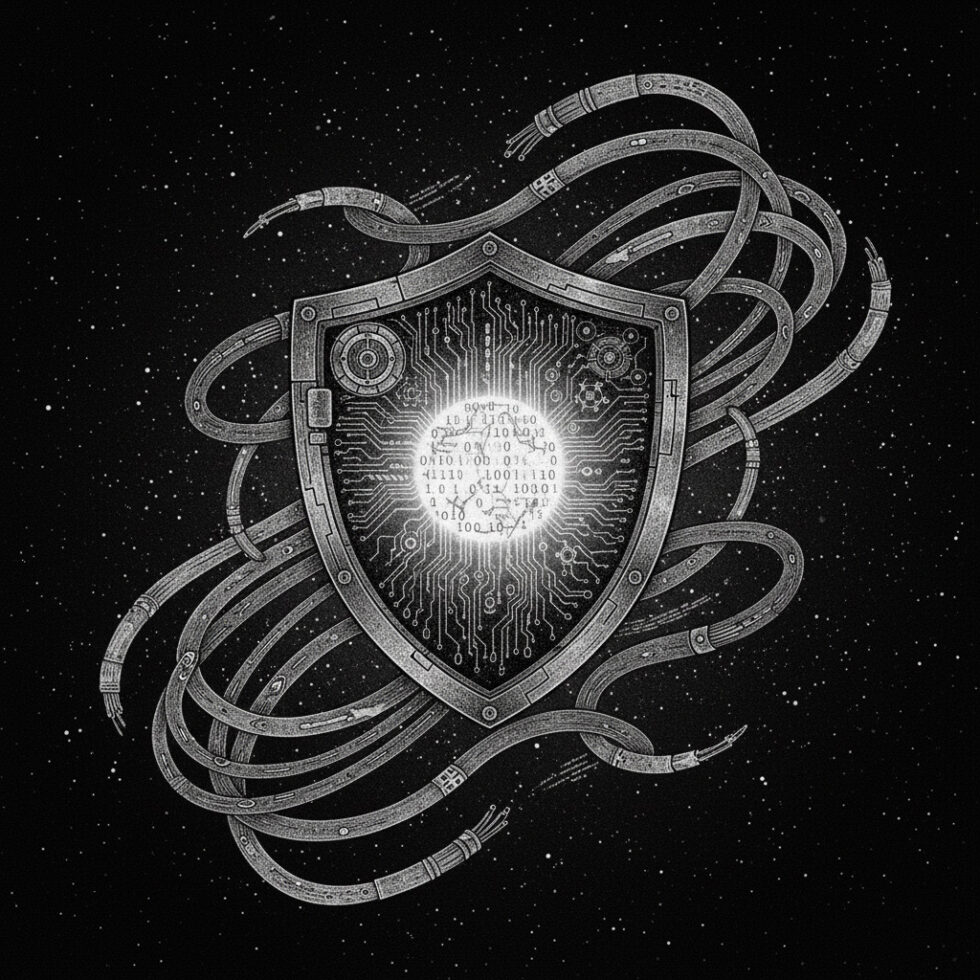
Why People Are Talking About Confidential Computing Now
We learned how to protect data at rest with disk encryption and in transit with HTTPS. But most applications still have a weak spot: the moment when data is being processed. At that point, it usually sits unencrypted in memory. A cloud admin, a compromised hypervisor, or a rogue process could—at least in theory—peek inside.
Confidential computing closes that gap. It uses special hardware features to run code in isolated, measured environments where data stays protected even while in use. You will hear terms like TEE (trusted execution environment), enclave, attestation, and sealed storage. Together, they let you run workloads in a way that proves to others: this code ran on genuine hardware, in a locked-down space, with the integrity you expect.
This article explains confidential computing in plain language. It covers what it is, how it works, and where it makes sense. We will also call out the trade‑offs, costs, and common mistakes so you can make informed decisions without getting lost in acronyms.
The Simple Idea: Trust the Box, Not the Building
Think of a normal server like an office building. You can lock doors, hire guards, and monitor cameras, but an insider with the master keys can still get to your desk. A confidential computing enclave is like a portable safe you bring into the building. Even if someone owns the building—or the cloud where it sits—they can’t open the safe or see what’s inside while you work.
How this happens, in a nutshell:
- Hardware isolation: The CPU and chipset carve out a protected region of memory. The operating system and hypervisor can’t read it.
- Measured startup: When your code starts, the hardware records a fingerprint of the code and its environment. This is the “measurement.”
- Attestation: The hardware produces a signed statement you can share. It proves which code ran, on which hardware, with which security features enabled.
- Sealed secrets: Only after verification do you send in keys or sensitive data. Secrets are delivered just‑in‑time to the safe.
This is different from regular VM isolation. A standard VM depends on the hypervisor and host OS to behave. In a TEE, the hardware enforces the boundaries. That shift reduces the number of parties you must trust.
What Today’s TEEs Actually Are
There are several major approaches you’ll encounter:
- AMD SEV‑SNP: Protects whole VMs by encrypting their memory and defending against tampering. Used by many cloud providers for “confidential VMs.”
- Intel TDX: Similar goal—confidential VMs—focused on isolating guest VMs from host software and other VMs.
- AWS Nitro Enclaves: Isolated compute environments attached to EC2 instances. They limit network and storage access for strong isolation.
- Arm CCA: A hardware architecture that enables isolation for confidential workloads across Arm ecosystems.
Under the hood, each uses different instructions and silicon features. As a developer or architect, you focus on the capabilities they expose: isolation, encryption of memory, attestation, and sealed storage. Cloud vendors package these into confidential VMs or enclave services you can boot without touching assembly code.
What Problems It Actually Solves
Data secrecy in shared environments
If your compliance or risk team worries about cloud insiders, hypervisor escapes, or memory scraping attacks, confidential computing can reduce that risk. It puts a fence around your workload and encrypts its memory so that even privileged software outside the fence cannot read it.
Proving integrity to partners
Sometimes the hurdle isn’t attackers but trust between organizations. Maybe two companies want to analyze a combined dataset but cannot see each other’s raw data. With mutually verified enclaves, they can run a joint computation, exchange only the outputs, and keep inputs hidden.
Protecting models and prompts
For AI teams, TEEs can protect proprietary models, weights, or prompts from leakage on shared infrastructure. They also help guard sensitive inputs (for example, patient data for a clinical LLM helper) while still letting you use cloud scale.
Regulatory alignment
In some sectors—healthcare, finance, government—confidential computing helps meet requirements for data minimization, purpose limitation, and least privilege. It won’t solve compliance on its own, but it’s a strong technical safeguard to show auditors.
How Attestation Works, Without the Buzzwords
Attestation is the prove‑it step. It lets a remote party verify that a workload is running inside a genuine TEE, with expected code and security controls. The basic flow is:
- Measure: When your enclave starts, the hardware creates a cryptographic digest (the measurement) of the code and settings.
- Sign: The hardware or its firmware signs a statement that includes this measurement and device identity.
- Verify: A verifier (maybe your key management service) checks that signature against a trusted root and compares the measurement to an allowlist.
- Unseal: If everything matches, the verifier releases secrets—like API keys—directly to the enclave.
Think of it as a gatekeeper that only opens when the right safe shows the right badge. If the code changes or the hardware is not genuine, the badge doesn’t match, and secrets stay locked.
What It’s Good For: Concrete Use Cases
Clean‑room analytics across companies
Two banks want to detect shared fraud patterns without exposing all their customer data to each other. Each encrypts its dataset, sends it to a verified enclave, runs the joint computation, and gets only aggregated insights back. Raw data never leaves its protective boundary.
Secure API mediators
A payment processor handles card numbers and personal info from many merchants. They deploy a tiny enclave that decrypts incoming data, runs minimal logic (like tokenization), and re‑encrypts everything before handing off to less trusted systems.
Protected AI inference
A medical transcription service hosts a speech‑to‑text model in a confidential VM. Patient audio is streamed directly to the protected runtime. The service offers a signed attestation receipt to clinics that records the model version and security settings used for processing.
Key management and hardware wallets in the cloud
An exchange keeps their hot wallet keys inside an enclave with tightly controlled I/O and policies. Transaction signing happens in the enclave after policy checks. Host access—even as admin—cannot extract keys.
Supply chain integrity for sensitive builds
A software vendor compiles critical components inside a confidential build farm. Attestation proves that builds ran with exact compilers and flags. This reduces the attack surface for tampering in the build pipeline.
What It Doesn’t Do
- It won’t fix bad app logic. If your code logs secrets or mishandles inputs, TEEs won’t save you.
- It won’t stop side‑channel leaks by magic. Modern TEEs reduce many side channels, but design and testing still matter.
- It won’t replace strong identity and access controls. You still need solid IAM, key rotation, and network policies.
- It won’t remove compliance duties. You must still meet privacy, retention, and audit requirements.
How to Choose: Enclaves vs Confidential VMs
You’ll often face two approaches:
- Language‑specific enclaves (like process‑level TEEs) are strong for tiny, well‑scoped code. They minimize the trusted computing base, but you may need special SDKs and careful I/O design.
- Confidential VMs protect whole systems: your OS, libraries, and app. They are easier to lift‑and‑shift, but the trusted base is larger, which affects assurance and performance.
A good rule: if you can isolate the sensitive part of your app into a small service (for example, tokenization, scoring, or encryption), use a narrow enclave. If you must run an existing stack with minimal changes, start with a confidential VM.
Designing a Practical Workflow
1) Define your threat model
Write down what you’re defending against. Is it a cloud insider? A compromised hypervisor? Another tenant on the same host? Be specific. This will dictate the features you need—like vTPM isolation, nested encryption, or dedicated CPUs.
2) Decide who must trust whom
List the entities: your app, your customers, your partners, your key service, and the cloud provider. For each, ask: what evidence do they need? Often the answer is “a signed attestation report plus a public allowlist of signed measurements.”
3) Set your attestation policy
Define how you will verify measurements, which firmware versions you allow, and how often to re‑attest. This policy should be versioned, auditable, and part of your production change process.
4) Bind secrets to the enclave
Use a key management service that checks attestation before releasing keys. Ideally, keys are wrapped for the enclave so only that instance can unwrap them, reducing the blast radius.
5) Keep the sensitive code small
The best enclaves are tiny. Use them for the critical logic that must see plaintext. Everything else—parsing, routing, logging—can stay outside and work with encrypted blobs.
6) Plan for upgrades
Firmware updates and microcode patches happen. Build a procedure for safe rollouts, staged attestation policies, and dual‑stack deployments so you don’t surprise customers mid‑transaction.
Performance and Cost: What to Expect
There is no single number, but some patterns hold:
- CPU overhead is usually small for compute‑heavy code. Memory encryption adds some cost, but modern hardware is fast.
- I/O overhead can be more noticeable. If you move lots of data in and out of the enclave, you’ll pay in copies and context switches.
- Memory limits used to be tight for process enclaves, but confidential VMs relax that. Still, plan capacity carefully.
- Price premiums exist on cloud SKUs, and you may need more operational work (attestation services, policy management). Budget time as well as money.
Benchmark your actual code paths. Start with the minimum secure design and grow only if needed.
Security Pitfalls to Avoid
- Leaky edges: Avoid logging plaintext at the boundary. Assume anything outside the enclave could be read.
- Co‑tenancy assumptions: Confidential VMs isolate memory, not performance. Noisy neighbors can still cause latency spikes; plan SLOs accordingly.
- Attestation theater: Producing a report no one checks helps no one. Wire verification into your key release and CI/CD gates.
- Supply chain blind spots: Verify compilers and dependencies for enclave code. Measured startup helps, but integrity begins earlier.
- Side‑channel ignorance: Use constant‑time libraries, beware data‑dependent branching, and follow vendor hardening guides.
Working With Cloud Providers
What to ask vendors
- Which TEE technology do you provide (SEV‑SNP, TDX, Nitro Enclaves, Arm CCA)?
- How is attestation implemented? What root of trust is used? Can I verify externally?
- Do you offer confidential GPUs or accelerators for AI workloads? If not, what’s the roadmap?
- How do you handle snapshots, live migration, and storage encryption for confidential VMs?
- What logs and evidence can I export for audits?
Interoperability and standards
The Confidential Computing Consortium coordinates projects and guidance. Standards like RATS (Remote Attestation Procedures) define common patterns for evidence and verification. Open‑source SDKs (such as Open Enclave) help you write code that can target multiple back ends.
Confidential Computing for AI Workloads
AI brings two big questions: how to protect sensitive inputs (like PII or medical notes), and how to protect expensive assets (model weights). TEEs can help with both:
- Inference: Run the model inside a confidential VM. Use attestation to release weights and decryption keys only if the right model and OS image are loaded.
- Fine‑tuning: Bring partner data into a temporary enclave, fine‑tune, export only the updated weights, and delete plaintext data.
- Prompt privacy: For copilots that see sensitive prompts, process them in an enclave and keep encrypted logs toward your retention policy.
Today, GPU support for confidential computing is improving but still maturing. This may limit the largest training jobs. For many inference tasks and moderate fine‑tuning runs, the tooling is already usable.
Compliance and Audit: Making It Count
To make confidential computing useful for auditors and partners, treat it as part of your evidence pipeline:
- Store attestation reports alongside application logs and deployment manifests.
- Version and track allowlists of measurements (hashes of approved images).
- Document your policy for updates, key release, and exception handling.
- Offer customers an attestation receipt with job IDs, timestamps, and verified measurements for regulated workflows.
Clear records turn hardware guarantees into compliance arguments you can stand behind.
MPC, HE, and TEEs: Which to Use When?
Confidential computing is one tool among several privacy‑preserving techniques:
- Multi‑party computation (MPC) splits a computation across parties so no one sees the whole input. Strong but can be slower and harder to build.
- Homomorphic encryption (HE) lets you compute on encrypted data. It’s improving but still costly for many workloads.
- Trusted execution (TEEs) is fast and compatible with existing code, but it adds a hardware trust root and residual side‑channel risks.
In practice, many systems combine them. For example, use MPC for the highest‑sensitivity aggregation and TEEs for real‑time scoring. Choose based on threat model, latency needs, and complexity budget.
Getting Started: A Minimal Plan
Step 1: Pick a narrow, high‑value target
Choose a function that genuinely benefits from in‑use protection: tokenization, ranking, or policy checks. Small scope means quick wins.
Step 2: Use a managed offering
Spin up a confidential VM or enclave from your cloud. Avoid custom kernels on day one. Let the platform handle firmware updates and attestation plumbing.
Step 3: Add attestation‑gated keys
Connect your key management service so it releases secrets only to verified instances with known measurements. Test failure modes: what happens if attestation fails?
Step 4: Instrument and prove
Produce an attestation receipt per job. Store it with logs. Share it with internal security and, if relevant, customers.
Step 5: Review and iterate
Run a performance test against your old design. Evaluate latency and cost. Only then consider expanding the scope or moving more of the app into the enclave.
What’s Coming Next
- Broader accelerator support: Confidential GPUs and NPUs will bring protected AI training and inference at scale.
- Better developer tooling: Simpler SDKs, portable attestation formats, and policy engines will reduce friction.
- Composable trust: Expect tighter links between attestation, CI/CD, service mesh, and runtime policy—security that follows the workload.
- Transparent proofs: Verifiable receipts for end users may become table stakes for sensitive processing across industries.
Real‑World Checklist
- Write a one‑page threat model with specific adversaries and assumptions.
- Pick enclave vs confidential VM based on code size and migration needs.
- Enable attestation and wire it to key release; don’t skip this step.
- Keep sensitive logic small; avoid plaintext outside the boundary.
- Benchmark both performance and operational overhead.
- Publish and maintain an allowlist of approved measurements.
- Prepare for updates; test how you rotate images and policies safely.
- Capture evidence for audits: attestation reports, timestamps, configurations.
Summary:
- Confidential computing protects data while it’s being used by isolating code and encrypting memory in hardware‑enforced environments.
- Attestation is the proof mechanism that unlocks secrets only for verified code running on genuine hardware.
- Use cases include cross‑company analytics, secure API mediators, protected AI inference, key management, and secure build pipelines.
- Choose between enclaves and confidential VMs based on scope: small, critical logic vs lift‑and‑shift systems.
- Plan for performance, integrate attestation with key release, and keep sensitive code small.
- Combine TEEs with other privacy tech when needed; treat evidence as part of your compliance story.
External References:
- Confidential Computing Consortium
- AMD Secure Encrypted Virtualization (SEV)
- Intel Trust Domain Extensions (TDX)
- AWS Nitro Enclaves
- Google Cloud Confidential Computing
- Microsoft Azure Confidential Computing
- Arm Confidential Compute Architecture (CCA)
- IETF RATS Architecture (RFC 9334)
- Open Enclave SDK
- Enarx Project





